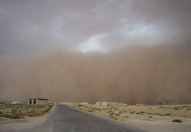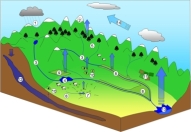Prof. Jason P. Evans
Climate Change Research Centre
University of New South Wales









Does convection-permitting resolution improve simulated precipitation in the Maritime Continent?
Argueso, D., A. Di Luca and J.P. Evans
International Conference on Regional Climate-CORDEX 2016, Stockholm, Sweden, 17-20 May 2016. Abstract
The
Maritime
Continent
has
consistently
been
identified
as
a
challenging
region
in
terms
of
simulating
precipitation.
Its
intricate
configuration
of
islands
with
complex
topography
surrounded
by
a
warm
and
shallow
ocean
makes
this
tropical
archipelago
an
unequaled
setting
to
test
potential
benefits
of
very
high-‐resolution
models.
In
this
study,
we
focus
on
the
western
Maritime
Continent
to
determine
features
of
precipitation
that
are
better
represented
with
increased
horizontal
resolution,
as
well
as
those
characteristics
that
deteriorate
at
finer
grid
spacing.
We
investigated
the
impact
of
spatial
resolution
on
rainfall
amounts
and
diurnal
cycle
using
the
Weather
Research
and
Forecasting
model.
A
set
of
simulations
running
over
a
5-‐year
period
at
resolutions
of
50,
10
and
2
km
were
completed
and
compared
against
satellite-‐derived
observational
products.
While
annual
biases
over
the
mountains
are
larger
as
resolution
increases,
our
results
suggest
that
precipitation
is
physically
more
realistic
in
the
convection-‐
permitting
experiment
performed
at
2-‐km
grid
spacing.
For
example,
the
shape
and
phase
of
the
diurnal
cycle
in
the
region,
which
are
traditionally
misrepresented
in
models,
are
substantially
improved
at
higher
resolution
when
comparing
with
the
observational
datasets.
The
amplitude
of
the
diurnal
cycle
is
also
improved
over
most
areas,
although
deficiencies
still
exist
in
that
the
strength
of
the
cycle
is
overestimated.
In
this
talk,
the
resolution
dependence
of
near-‐surface
temperature,
10-‐m
winds
and
cross-‐
sections
of
different
variables
will
also
be
analyzed.
As
a
result,
possible
mechanisms
that
contribute
to
better
simulating
aspects
of
precipitation
will
be
put
forward,
such
as
finer
representation
of
the
land-‐sea
thermal
contrast
and
the
local
circulation.
|
|